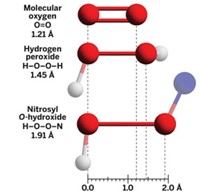Advertisement
Grab your lab coat. Let's get started
Welcome!
Welcome!
Create an account below to get 6 C&EN articles per month, receive newsletters and more - all free.
It seems this is your first time logging in online. Please enter the following information to continue.
As an ACS member you automatically get access to this site. All we need is few more details to create your reading experience.
Not you? Sign in with a different account.
Not you? Sign in with a different account.
ERROR 1
ERROR 1
ERROR 2
ERROR 2
ERROR 2
ERROR 2
ERROR 2
Password and Confirm password must match.
If you have an ACS member number, please enter it here so we can link this account to your membership. (optional)
ERROR 2
ACS values your privacy. By submitting your information, you are gaining access to C&EN and subscribing to our weekly newsletter. We use the information you provide to make your reading experience better, and we will never sell your data to third party members.
Physical Chemistry
Atmospheric Trioxy Radical Idea Banished
Transient fusing of O2 and ·OH to form ·HO3 doesn’t seem to be important in atmospheric chemistry
by Elizabeth K. Wilson
June 7, 2010
| A version of this story appeared in
Volume 88, Issue 23
For years, scientists have tried to determine if a transient fusing of molecular oxygen and the hydroxyl radical (·OH) plays a significant role in atmospheric chemistry. Sébastien D. Le Picard of the University of Rennes, in France, and colleagues say they have the answer: No (Science 2010, 328, 1258). Experiments and theory have both suggested that ·OH, which acts as a chemical mop to sweep up many atmospheric pollutants, could be temporarily sequestered as part of the hydrogen trioxy radical (HO·3). Picard’s group used laser-induced fluorescence to monitor reactions of ·OH in the presence of O2 over a range of temperatures. From these experiments, they were able to determine the thermodynamics of HO–O2 bond formation and dissociation. The bond between ·OH and O2, they show, is too weak to allow formation of substantive or lasting quantities of HO·3. They conclude that the fraction of ·OH bound to O2 is less than 0.1% at all altitudes in Earth’s atmosphere.





Join the conversation
Contact the reporter
Submit a Letter to the Editor for publication
Engage with us on Twitter